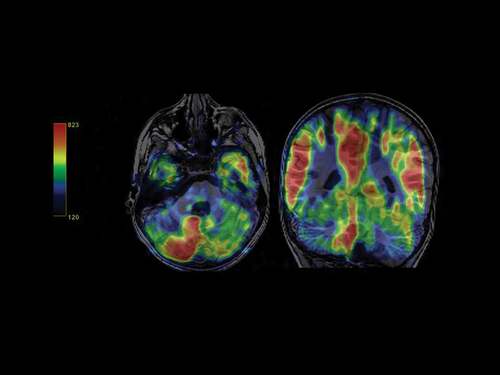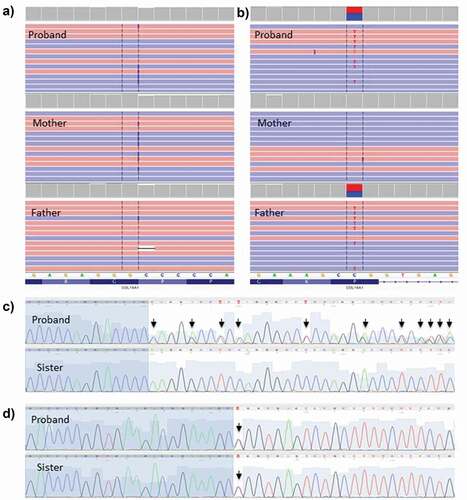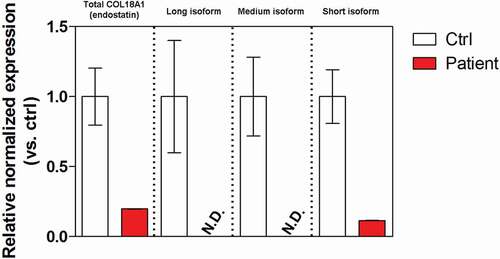Figures & data
Figure 1. Color orientation 3D-tractography reconstruction of the arcuate fascicle. The patent´s right-left asymmetry evidence a shorter tract and a lower amount of nerve fibers on the left side.

Figure 2. Color-code perfusion map with the pulsed-ASL sequence. Decreased cortical blood flow in the patient´s left cerebellar hemisphere.

Figure 3. Illustration of the COL18A1 variants present in the proband by NGS and sanger sequencing and segregation studies.

Table 1. Neuroimaging findings in patients with biallelic COL18A1 mutations. * Cases with anomalies in brain MRI (only cases with performed and available results)

